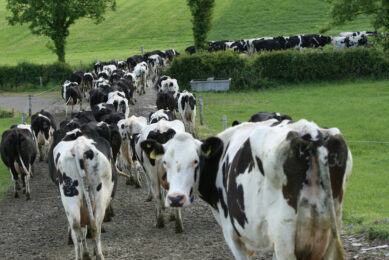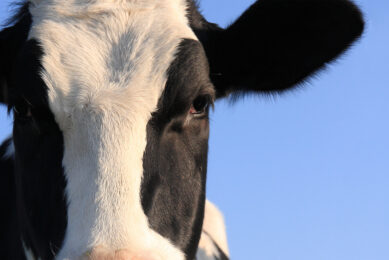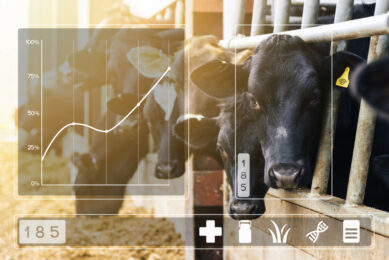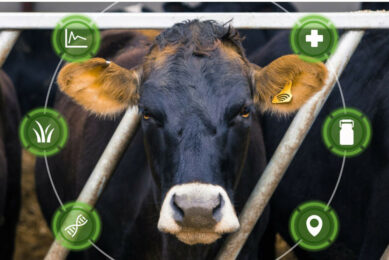Scan cows regularly in autumn calving herds
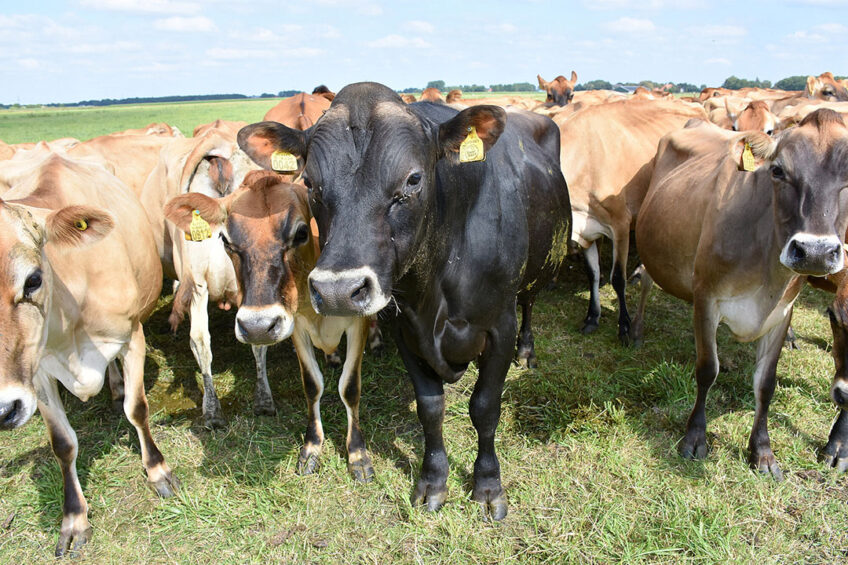
Dairy farmers that run an autumn calving herds have been advised to scan their cows regularly to assess their fertility status.
Even though turnout has been later this year due to a colder spring and slow grass growth, it is the perfect opportunity for farmers to check the number of cows in calf.
Empty cows going into the winter period can cost a lot of money. Therefore, they need to be identified as early as possible. For the majority of autumn-winter calving dairy herds, turnout is often the time the bull is turned into the cows to sweep up those not already in-calf. Many dairy farmers conduct routine fertility scanning, often on a weekly, fortnightly, or monthly basis through the main part of the breeding season.

Dr David Mackey, a dairying adviser at the College of Agriculture, Food and Rural Enterprise (CAFRE) in Northern Ireland, says that for those dairy farmers that don’t normally scan their cows, after turnout is one of the key times to assess pregnancy status to identify cows not in calf.
Scanning reliable
Scanning cows is the most reliable form of identifying if a cow is pregnant and this can be carried out from around 28 days after service. Scanning from around 60 days can even be used to establish the sex of the calf.
An average conception rate for a herd is around 40% but this can vary between herds depending on the management routines.
The majority of cows in autumn calving herds should now be settled in calf and a quick analysis of service records can help to establish the conception rate of the herd.
The conception rate is simply the number of cows confirmed in calf over the total number of services conducted by either AI or natural service, ignoring cows never served or those served in the last month.
An average conception rate for a herd is around 40% but this can vary between herds depending on the management routines. Across the industry, with widespread use of positive fertility bulls, together with good nutritional management, conception rates are tending to increase again.

David says: “The cows in the CAFRE Greenmount dairy herd are scanned every Friday morning by the local vet during the breeding season. Pre-breeding checks are conducted on cows from around a month before the start of the breeding season, which currently begins on 14 December.
“Pre-breeding checks are conducted at approximately 30-days post calving and cows are scanned again at around 30 and 80 days after service. While many farmers don’t conduct a second pregnancy diagnosis at 80-100 days post service, (milk sample or scan), this pregnancy diagnosis is important, as it helps to detect the small proportion of cows with early foetal loss at 45 to 90 days, that would otherwise be assumed to still be in calf,” he said.
How to effectively manage special needs cows
It is vital to make sure that cows that have calved are taken care of in a proper manner as 75% of health problems appear in the first month after calving. So, what are some points to consider when it comes to the special needs group and the care area? Find out more…
Farmers that tend to run a bull with cows to sweep up late calving cows and repeat breeders need to set a date for his removal each year. At CAFRE Greenmount, the bull has traditionally been taken out in mid-July with the final pregnancy diagnosis conducted in early September.
“In the last few years, however, he has been taken out in mid-June, to tighten up the calving pattern,” adds David. “Further tightening of the Greenmount herd calving pattern is planned in the next couple of years to reduce the calving season down to approximately 16 weeks.
“Now is a good time to take stock of the breeding season so far, since the majority of cows should be back in calf and if you want to tighten your calving pattern, remember to remove the bull from the cows!”
Join 13,000+ subscribers
Subscribe to our newsletter to stay updated about all the need-to-know content in the dairy sector, two times a week.



